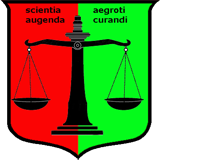Institute for Response-Genetics (e.V.)Chairman: Prof. Dr. Hans H. StassenPsychiatric Hospital (KPPP), University of Zurich |

|


|
Electrical Activities of the BrainBrain waves are attributed to electrical activities of the brain that are manifest as alternating potential differences at the scalp surface. When acquired through scalp electrodes, such potential differences result in time-continuous signals termed "electroencephalogram" (EEG). From the physical point of view the wave-like qualities of the EEG can be modelled as a finite sum of harmonic oscillations at discrete vibration rates. Each oscillation is uniquely characterized by two quantities, frequency ("pitch") and amplitude ("loudness"). In terms of this model, brain waves are composed of a series of "partial tones" ranging in frequency between 0.25–64 Hz (7 octaves), where the tonal composition essentially depends on the subject’s state of consciousness, such as wakefulness or sleep stages. Natural versus Reactive FluctuationsThe amplitudes of EEG partial tones are not constant, but fluctuate around average values. The same is true, though less pronounced, for frequency. Here we find subtle shifts of partial tones towards lower and higher pitch, analogous to intonation patterns in human speech. Although EEG fluctuations possess a pronounced random character, detailed analysis also reveals strong intrinsic regularities that allow one to distinguish between (1) "natural" fluctuations that reflect the basic activities of brain regions, and (2) "reactive" fluctuations that reflect responses to or interactions with the immediate environment. While natural fluctuations and slow reactive changes can be quantified through standard spectral analysis —which involves a transformation of the EEG signal from the time into the frequency domain ("Fourier transformation")—, fast reactive changes of the EEG can only be assessed in the time domain through an "event-related potential" analysis.
References
Stassen HH, Bachmann S, Bridler R, Cattapan K, Herzig D, Schneeberger A, Seifritz E. Inflammatory
Processes linked to Major Depression and Schizophrenic Disorders and the Effects of Polypharmacy
in Psychiatry: Evidence from a longitudinal Study of 279 Patients under Therapy. Eur Arch
Psychiatry Clin Neurosci. 2021; 271(3): 507-520
[get the article]
Braun S, Bridler R, Müller N, Schwarz MJ, Seifritz E, Weisbrod M, Zgraggen A, Stassen HH:
Inflammatory Processes and Schizophrenia: Two Independent Lines of Evidence from a Study
of Twins Discordant and Concordant for Schizophrenic Disorders. Eur Arch Psychiatry Clin
Neurosci 2017; 267: 377-389
[get the article]
Braun S, Bridler R, Müller N, Schwarz MJ, Seifritz E, Weisbrod M, Zgraggen A, Stassen HH:
Inflammatory Processes and Schizophrenia: Two Independent Lines of Evidence From a Study
of Twins Discordant and Concordant for Schizophrenic Disorders. Neuropsychopharmacology
2016; 41: S414–S415
Stassen HH, Delfino JP, Kluckner VJ, Lott P, Mohr C: Vulnerabilität und psychische Erkrankung.
Swiss Archives of Neurology and Psychiatry 2014; 165(5): 152-157
Stassen HH, Angst J, Hell D, Scharfetter C, Szegedi A: Is there a common resilience mechanism
underlying antidepressant drug response? Evidence from 2'848 patients. J Clin Psychiatry 2007;
68(8): 1195-1205
Buckelmüller J, Landolt HP, Stassen HH, Achermann P: Trait-like individual differences in the
human sleep EEG. Neuroscience 2006; 138: 351-356
Weisbrod M, Hill H, Sauer H, Niethammer R, Guggenbühl S, Stassen HH: Nongenetic pathologic
developments of brain-wave patterns in monozygotic twins discordant and concordant for
schizophrenia. Am J Med Genetics B 2004; 125: 1-9
Stassen HH: EEG and evoked potentials. In: D. Cooper (ed) Nature Encyclopedia of the Human
Genome. Nature Publishing Group, London 2003; 3: 266-269
Umbricht D, Koller R, Schmid L, Skrabo A, Grübel C, Huber T, Stassen HH: How specific are
deficits in mismatch negativity generation to schizophrenia? Biol Psychiatry 2003; 53:
1120-1131
Dünki RM, Schmid GB, Stassen HH: Intraindividual specificity and stability of the human EEG:
Linear vs. nonlinear approaches. Meth Inform Med 2000; 39: 78-82
Stassen HH, Coppola R. Torrey EF, Gottesman II, Kuny S, Rickler KC, Hell D: EEG differences in
monozygotic twins discordant and concordant for schizophrenia. Psychophysiology 1999; 36,1:
109-117
Stassen HH, Bomben G, Hell D: Familial brain wave patterns: study of a 12 sib family. Psychiat
Genetics 1998; 8: 141-153
Dünki RM, Schmid GB, Scheidegger P, Stassen HH, Bomben G, Propping P: Reliable computer-assisted
classification of the EEG: EEG variants in index cases and their first-degree relatives.
Am J Med Genetics B 1996; 67,1: 1-8
Kaprio J, Buchsbaum M, Gottesman II, Heath A, Körner J, Kringlen E, McGuffin P, Propping P,
Rietschel M, Stassen HH: What can twin studies contribute to the understanding of adult
psychopathology? In: T.J. Bouchard jr. and P. Propping: Twins as a tool for behavioral
genetics. Chichester: John Wiley & Sons, Dahlem Workshop Reports, Life Sciences Research
Report 1993; 53: 287-299
Stassen HH, Lykken DT, Propping P: Zwillingsuntersuchungen zur Genetik des normalen
Elektroenzephalogramms. In: P. Baumann (ed): Biologische Psychiatrie der Gegenwart, Wien:
Springer 1993, 139-144
Stassen HH, Lykken DT, Propping P, Bomben G: Genetic determination of the human EEG (survey
of recent results from twins reared together and apart). Human Genetics 1988; 80:
165-176
Stassen HH, Lykken DT, Bomben G: The within-pair similarity of twins reared apart. Eur Arch
Psychiatr Neurol Sci 1988; 237: 244-252
Stassen HH, Bomben G, Propping P: Genetic aspects of the EEG: an investigation into the
within-pair similarity of monozygotic and dizygotic twins with a new method of analysis.
Electroenceph clin Neurophysiol 1987; 66: 489-501
Stassen HH: The similarity approach to EEG analysis. Meth Inform Med 1985; 24: 200-212
Stassen HH: Computerized recognition of persons by EEG spectral patterns. Electroenceph
clin Neurophysiol 1980; 49: 190-194
|
|

EEG spectral pattern derived from a typical Alpha-EEG. The variability of the spectral intensities is estimated from 4 consecutive epochs of 20-sec length under the experimental condition of quiet wakefulness and plotted as shaded area along the verical axis. The spectral resolution is 0.25Hz over the frequency range of 0-30Hz. |
|
| [ Mail to Webmaster ] k454910@ifrg.ch |